
Growing Raspberries in Montana Gardens
Just about everything the home gardener might want to know about growing raspberries is explained in this MontGuide: differences among cultivars, how to choose a good site, preparing the ground, planting, pruning and training, fertilizing and irrigating. It also touches on insects and diseases.
Last Updated: 11/19by Cheryl Moore-Gough, Extension Horticulture Specialist and Dara Palmer, Montana Master Gardener Coordinator
RASPBERRIES WILL GROW BEST BELOW 7000 FEET
in elevation in full sun on neutral or slightly acid (pH 7 to 6), well-drained loam soils. Soils with higher pH can be deficient in available iron, resulting in raspberry leaves becoming chlorotic (turning yellow). The canes are subject to rapid desiccation and breakage, particularly in winter, and benefit from a windbreak.

Photo by Frank Erickson
Of the four color classes (red, yellow, black and purple) and two bearing habits (June bearing and everbearing, also called fall bearing), June bearing red raspberries are most common in Montana and they are among the hardiest. Most yellows are color mutations of the reds and can also be quite hardy. Black raspberries are the least hardy raspberries, but there are promising new black varieties that are hardier. Purple raspberries are hybrids of the black and the red and are intermediate in hardiness. They have a strong flavor that is preferred for cooking purposes, but they are not highly popular otherwise. Most gardeners plant June bearing types since the growing season is often not long enough for everbearing plants to mature a fall crop. Gardeners in the warmer areas of the state may be successful with black and purple raspberries and with everbearing types. Cultivars recommended for Montana with their descriptions appear in Table 1 on page 2.
Growing Raspberries
Site Selection
Gently sloping sites protect the plants from some types of cold injury by allowing colder air to drain down-slope, away from the plants. Always plant on the slope and never at the top of the hill, where wind damage is most severe, or at the bottom, which becomes a cold air pocket.
Raspberries need plenty of moisture but do poorly in wet soils. Be sure the subsoil is well-drained with no hardpan or berm to restrict water drainage. The water table should be at least six feet deep at its highest point (usually in spring). Flooding for as little as 24 hours can suffocate raspberry roots and wet sites can encourage crown gall and root rot diseases.
Cultivated raspberries can contract several diseases from wild relatives. To reduce disease incidence, select a site at least 300 feet from other cultivated or wild brambles. Also, raspberries have root rot diseases in common with tomato, potato, eggplant, peppers and petunias, so keep the plantings separated by some distance and never follow one of these crops with raspberries.
Preparing the ground
Land that has been previously cultivated produces the best crops. If it was previously sodded or old pasture, turn it at least one year prior to planting raspberries and continue to cultivate it to allow the organic material to decompose and to bring weeds under control before planting. If weeds continue to be a problem, cover the planting area for several months with black plastic to smother seedlings.
All small fruit crops benefit from additional soil organic matter. Before planting, turn under about 1200 pounds (40 bushels) of rotted manure or compost per 1000 square feet of planting area. Apply about 6 ounces of super phosphate (0–20–0) per bushel of manure to boost soil phosphorus levels.
TABLE 1. Characteristics of Raspberry Cultivars
| Variety | Zones | Thorns | Color | Susceptible | Resistance |
| June/Summer Bearing Types | |||||
| Amira | 4 to 8 | Red | |||
| Boyne | 3 to 8 | Red | LLR, PRR, CG | ||
| Bristol | 4 to 8 | Black | RFB | PDM | |
| Canby | 3 to 8 | Thornless | Red | A | Viruses, Aphids |
| Encore | 4 to 7 | Red | PRR, Cold, PDM | Cold | |
| Festival | 3 to 8 | Few | Red | PRR | |
| Killarney | 3 to 8 | Red | LLR | PRR | |
| Latham | 3 to 8 | Red | Mildew | Disease | |
| Mammoth | 4 to 8 | Thornless | Red | ||
| Nova | 3 to 8 | Few | Red | Rust, Cane Diseases, Heat | |
| Prelude | 4 to 8 | Red | PRR, Cold | ||
| Fall/Everbearing Types | |||||
| Anne | 4 to 7 | Yellow | Leafhoppers, Rust | PRR | |
| Autumn Bliss | 3 to 8 | Thorny | Red | RBDV | |
| Autumn Britten | 3 to 8 | Red | |||
| Caroline | 4 to 7 | Red | PRR, Yellow Rust, Gray Mold | ||
| Fall Gold | 4 to 8 | Yellow | |||
| Heritage | 4 to 8 | Thorny | Red | Disease, Heat, Humidity, PDM | |
| Himbo Top | 4 to 8 | Red | PRR | ||
| Jewel | 4 to 8 | Black | A | ||
| Joan J | 4 to 8 | Thornless | Red | ||
| Polana | 3 to 8 | Red | |||
| Royalty | 4 to 8 | Thorny | Reddish-Purple | CG | RA, RMV |
Planting
Obtain certified disease-free plants from a reputable nursery. Local dealers are often the best source of plants. Old raspberry patches are often infected with numerous diseases; transplanting from them is risky and not worth the few dollars that can be saved on plant material.
Plant dormant raspberry plants as soon as the ground can be worked in early spring or in mid-fall after plants have lost their leaves.
The site will ideally have well-drained soil with a pH of between 5.5 and 6.5. Set potted plants as deeply as they grew in the nursery, spaced about 2 feet apart in rows spaced 5 feet apart. Set bareroot plants in a shallow hole wide enough to accommodate the roots. Spread the roots out so that the crown (where the roots meet the stem) is 1 – 2 inches below the ground surface.
Cover with soil and firm in to remove air pockets. Water well and cut canes back to six inches above the ground.
Newly planted canes will not produce fruit the first year, and typically not the second, but will provide a crop in the third year. Cultivate regularly to control weeds.
Plants of red and yellow raspberries will sucker and grow into a bed about 3 to 4 feet wide. Maintain this width by careful pruning since wider rows make it difficult to harvest fruit from inside plants. Black and purple raspberries do not sucker like the reds and are maintained in individual hills.
Pruning
Raspberries need regular pruning to keep the planting productive. How to prune them depends upon the type of raspberries being grown. Raspberries produce two types of canes, primocanes are vegetative while flowering canes are called floricanes.
June bearing red and yellow cultivars produce primocanes the first season. These canes cease shoot growth in late summer and form flower buds from their tips to their bases. These buds bloom and fruit the following spring as floricanes.

Figure 1A.Red and yellow raspberry plants before (left) and after (right) pruning.

Figure 1B. Black or purple raspberry plants before (left) and after (right) spring pruning. Note that the laterals have been shortened for best plant productivity.
Canes fruit only once and die soon after harvest. While they are fruiting, new primocanes grow from the base of plants and form buds for next year’s crop.
During spring pruning remove all dead, damaged and weak canes (Figure 1A). Thin the remaining canes to stand about 6 inches apart in the row. Let the row width slowly increase to about 3 to 4 feet so that the row becomes a “bed.” Harvesting from the middle of a bed wider than 4 feet is difficult.
Everbearing red and yellow cultivars grow similarly to the June bearing types but produce two crops each season. Vegetative canes grow the first season and set their flower buds in early fall like the June bearing types. Buds on the lower parts of the canes remain dormant but buds on the upper 6 to 10 inches of cane bloom immediately, producing the fall crop at the tips of current season’s wood. This portion of the cane dies after fruiting, but the lower portion overwinters, and its buds produce the first crop the following year. So, the first crop of the season is produced on the lower parts of one-year-old canes and the second crop of the season is produced on the upper parts of current season canes. After fruiting, the remaining part of the cane dies and is removed during spring pruning. Thin everbearing plants as you would June bearing plants.
June bearing black and purple raspberries are pruned somewhat differently than red and yellow cultivars because of their different growth habits. In mid-summer, pinch the tips of the current season’s canes to about 30 to 36 inches in height. This is called “summer topping” and it forces formation of strong lateral shoots. These shoots cease their growth in late summer and form flower buds for next year’s crop at that time. During spring pruning, remove all old fruited canes from the previous season and shorten the laterals on new canes to about 16 inches in height (Figure 1B). These will form fruit in summer then the entire cane will die, to be removed the following spring and replaced by new canes growing from the crown.
Training
Common red raspberry cultivars grow erect but sometimes droop into the aisles making harvest difficult. Unsupported canes are also prone to damage from the wind. To make a trellis, sink two strong posts into the ground 8 feet apart and attach a cross piece 30 inches long to each post about 40 inches above the ground (Figure 2). Fasten a strand of fence wire to each of the two ends of one crosspiece and run them the length of the row, fastening them to the cross piece on the opposite post. Train the canes to grow up between the wires to keep them from drooping too far out of the row. Loosen one end of each wire at the end of the season to prevent the wires from contracting in winter and pulling the posts out of the ground.
An alternative support is to tie several canes to a strong stake; remove the tie during pruning (Figure 3).
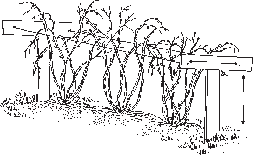
Figure 2. Red and yellow raspberries supported by a simple trellis.

Figure 3. Several canes of red and yellow raspberries can be supported by a single stake.
Fertilizer
Raspberries need ample amounts of the major nutrients to produce good crops, since larger diameter canes yield more fruit. Broadcast a complete fertilizer such as 10–10–10, or another fertilizer with equivalent nitrogen, to the patch early each spring at the rate of about 6 to 8 pounds per 100 linear feet of row. If an organic fertilizer is preferred, be sure to apply it at rates equivalent to those given above. Do not fertilize later than mid-June.
Iron deficiency can be a problem in much of Montana. Though the soil may contain enough iron, the compound is chemically bound and unavailable for plant use. Iron deficiency symptoms appear as normal-sized yellow leaves on floricanes (Figure 4). Often, the midvein and lateral veins remain green while the tissue between the veins yellows. If this appears, apply an organic mulch and use an acid fertilizer such as ammonium sulfate to reduce the alkalinity. If the problem persists apply chelated iron according to directions on the label.

Figure 4. Iron deficiency shown on blueberry leaves. BY JOHN HARTMAN,
UNIVERSITY OF KENTUCKY, BUGWOOD.ORG 5407854
Irrigation
Irrigated plants are usually more vigorous and productive than those not irrigated. Begin seasonal irrigation when irrigation begins in the vegetable garden and apply about 1 to 2 inches of water every week through harvest. Adjust to provide more water, up to perhaps 2 to 2.5 inches per week, during hot, windy weather. Adequate moisture will keep the soil moist (not soaked) to a depth of 10 to 12 inches, where 70 percent of the raspberry root system is located. Irrigate the soil, not the foliage or fruit as wet fruit will rot rapidly before harvest.
Supplying adequate water is particularly critical during bloom and fruit formation. Inadequate amounts at these times can cause poor fruit set, malformed fruit, and crumbly fruit.
Decrease or eliminate irrigation between the end of harvest and autumn leaf fall to allow the canes to harden for winter. After leaf fall and before the soil freezes, supply the plants with 1 inch of water per week to fill their internal water reserves and decrease the amount of damage from winter desiccation.
Harvest and Storage
Raspberries are the most delicate of any small fruit. Ripe fruit can deteriorate in a few hours if weather is hot and humid. Select raspberries which are bright-red (red raspberry) or fully-colored (black, purple, or yellow raspberry). Ripe raspberries should be bright, shiny, uniform in color and maturity. Avoid overly soft fruit with dark spots or if wet or moldy. A good test for ripeness is how easy the berry pulls from the cane. A truly ripe berry will slip off the stem with a gentle pull. Harvest the fruit early in the morning and cool it immediately to protect quality.
Place berries loosely in a shallow container to allow air circulation. Holding raspberries in containers larger than a half pint will result in the fruit on the bottom being crushed by the weight of the fruit above it. Berries are highly perishable. Store immediately in a cool, moist area of the refrigerator, such as in the vegetable keeper to help extend the usable life of the fruit. Do not wash until ready to eat. Raspberries can typically be stored one to two days in the refrigerator.
Winter Damage
Late fall watering as described in the “Irrigation” section will help reduce the incidence of winter drying, especially in the tips of the canes.
Raspberry canes will de-harden and can become active in late fall and mid- to late winter if the air temperature remains above about 41°F for several days. The sudden hard freezes that usually follow kill the active tissue. Because the upper parts of the cane break dormancy first they are the most susceptible to this type of injury. Winter-damaged canes often produce undersized yellow leaves and small fruit. Later in the summer these leaves become “bleached.” Reduce the chances of this happening by wrapping the canes with burlap (if there are only a few) or by building a temporary fence to shade and cool the plants. This keeps the canes cold and the soil around them frozen, both of which reduce injury. Remove the burlap plant wraps and the fence by late March or early April.

Figure 5. Japanese Beetles. BY GERALD HOLMES, CALIFORNIA POLYTECHNIC STATE UNIVERSITY AT SAN LUIS OBISPO, BUGWOOD.ORG 1576852
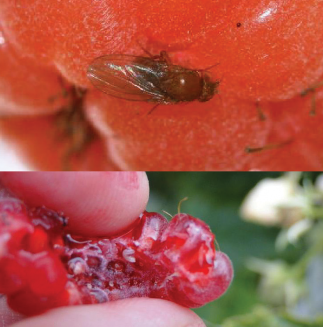
Figure 6. SWD adult (top) and immature fly in fruit (bottom).
BY HANNAH BURRACK, NORTH CAROLINA STATE UNIVERSITY, BUGWOOD.ORG 5444193 (TOP) AND 5444186 (BOTTOM)
Pest Control
Insects
Aphids and mites. These common insects seldom need to be controlled with anything but a hard spray of water. Wasps will be attracted to overripe fruit, so harvest frequently.
Japanese beetles. This relative newcomer to Montana is a distinctive, green and bronze beetle with a row of white tufts on each side (Figure 5). They can quickly skeletonize raspberry leaves. See the MontGuide Japanese Beetle (MT201404AG). Hand pick the adults and destroy.
Spotted-wing Drosophila (SWD). Another relative newcomer to Montana typically appears in late July or August, making these insects more problematic to late-bearing cultivars. The female fruit fly inserts eggs into soft-skinned fruits where the immature flies develop (Figure 6). Monitor for their presence using purchased or homemade bait traps consisting of a lure, such as apple cider, and yellow sticky traps available at the hardware store, in a plastic cup with small holes (Figure 7).

Figure 7. Homemade bait trap. BY HANNAH BURRACK, NORTH CAROLINA STATE UNIVERSITY, BUGWOOD.ORG 5444190

Figure 8. Gray mold caused by Rhizopus (left) and Botrytis (right).
BY JOHN HARTMAN, UNIVERSITY OF KENTUCKY, BUGWOOD.ORG 5407874
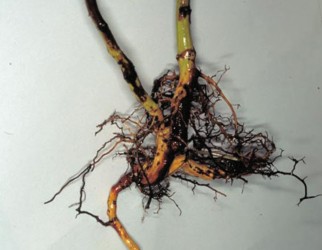
Figure 9. Phytopthora root rot. BY CHRISTER OLSSON, SWEDISH BOARD OF AGRICULTURE, BUGWOOD.ORG UGA0725005
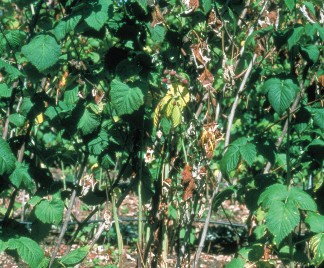
Figure 10. Sudden wilting of primocanes caused by Phytopthora root rot. BY ANDRÉ BOLAY, ST. FÉDÉR. DE RECHERCHES AGRONOMIQUES DE CHANGINS, BUGWOOD.ORG UGA0725043
Diseases
Remember that floricanes die immediately after fruiting, so yellowing leaves on them is normal. Yellow leaves on primocanes, however, can indicate an issue. Thin and prune properly to avoid many diseases, and control weeds.
Gray mold will cause berries on the plant to rot and be covered with a gray mold (Figure 8). Cool, moist weather is conducive to this disease. Weed and prune well to increase air circulation. If mold is present and you are using a mulch, be sure to remove it at the end of the season to avoid contamination the following year.
Root rots can be caused by several different fungi (Figure 9). Excessive moisture in the soil can increase the possibility of root rots and cane death due to lack of air in the soil (Figure 10).
Animals
Rabbits will eat canes to the ground in winter. If they are present in your location, exclude them with a chicken wire fence.
Weeds
Weeds can harbor pests and diseases, and compete with the raspberry canes for water, nutrients and sometimes sunlight. Home gardeners control weeds by careful hoeing. A 4-inch layer of organic mulch controls many weeds and keeps the soil frozen in winter, reducing the incidence of plant heaving. Clean straw, wood chips, sawdust or leaves insulate the roots from extreme cold and conserve soil moisture as well. However, rodents sometimes burrow through the mulch in winter and damage the raspberry canes. Unfortunately, this often happens under the snow and is not discovered until spring thaw.
Abiotic Problems
Abiotic problems are those not caused by a living pathogen or animal. They are also called physiological diseases because they arise following an alteration of the physiology of the plants. Table 2 on page 7 lists symptoms and some possible causes.
Acknowledgements
The authors would like to acknowledge the original author of this MontGuide, Dr. Bob Gough, former Extension Horticulture Specialist.
TABLE 2. Abiotic Problems of Raspberries
| Plant part affected | Possible cause |
| Canes | |
| Death of whole cane or individual buds before spring leaf out | Low temperature |
| Sudden death after leafing out | Low temperature damage to vascular tissue |
| Breakage, abrasion, desiccation | Wind |
| Wilt | Excessive heat, drought, or wind |
| Fruit | |
| Brown, dry | High sunlight or high temperature |
| Crumbly | Drought |
| Off-colored, white (Figure 11) | Sunscald, high UV exposure |
| Leaves | |
| Torn, shredded; no insects apparent | Wind, hail |

Figure 11. Sunscald damage on raspberry fruit. BY WHITNEY CRANSHAW, COLORADO STATE UNIVERSITY, BUGWOOD.ORG 5445297 (LEFT) AND 5445295 (RIGHT)
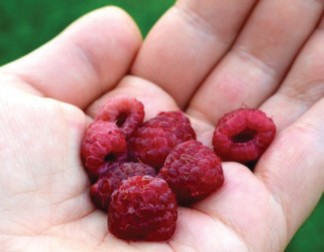
Figure 12. Harvest fruit early in the morning and cool immediately to protect quality. BY MSU EXTENSION

Figure 13. Rinse raspberries before consuming. Do not rinse berries until ready to eat. BY MSU EXTENSION

